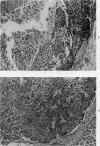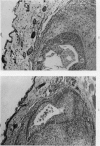Abstract
Eleven human bladder carcinomata of different degrees of differentiation were implanted in mice immunosuppressed by thymectomy, anti-thymocyte serum and x-rays. Seven carcinomata grew well and one poorly and 3 produced mainly fibrous nodules in the mice. Normal human bladder tissues were grown from 4 other patients. The administration of a haematoporphyrin derivative (HpD), followed 24 h later by exposure to white light, caused marked destruction of tumours but little or none of normal bladder tissues. HpD or light alone caused no damage to tumours or normal tissues. It is suggested that photodynamic therapy may be applicable in the treatment of superficial transitional cell carcinoma of the bladder.
Full text
PDF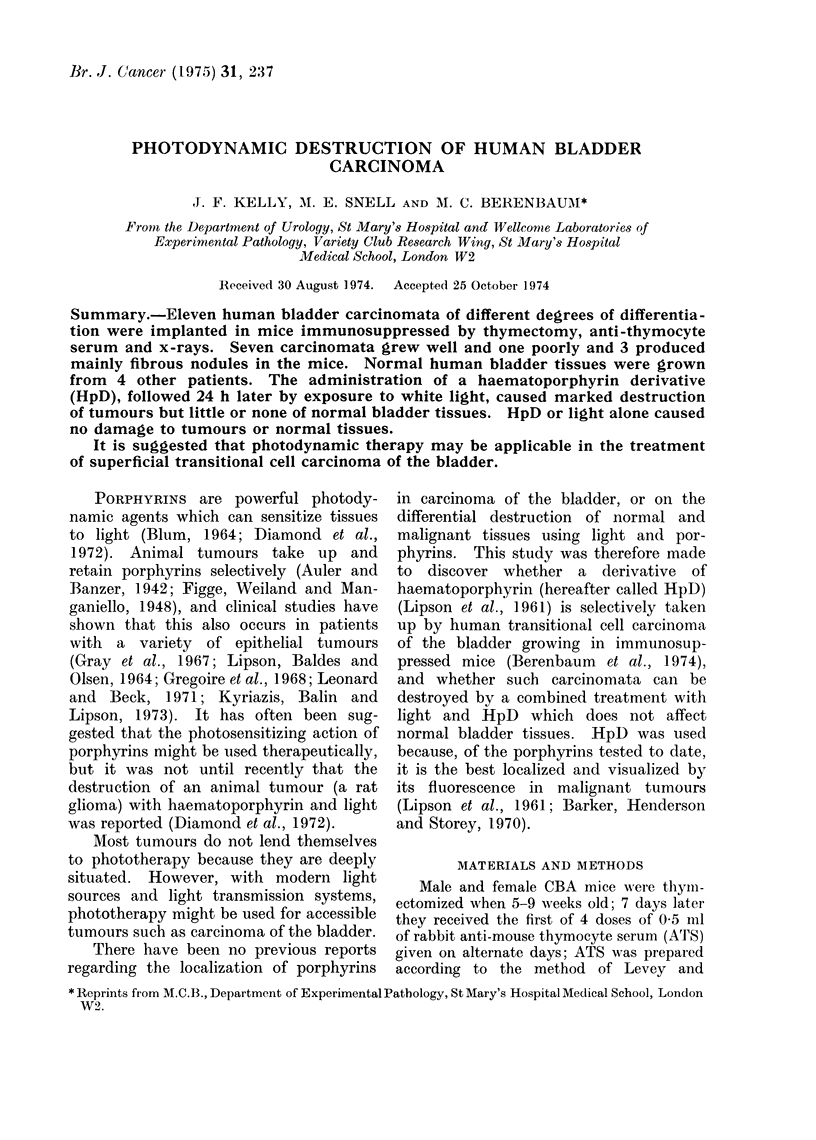
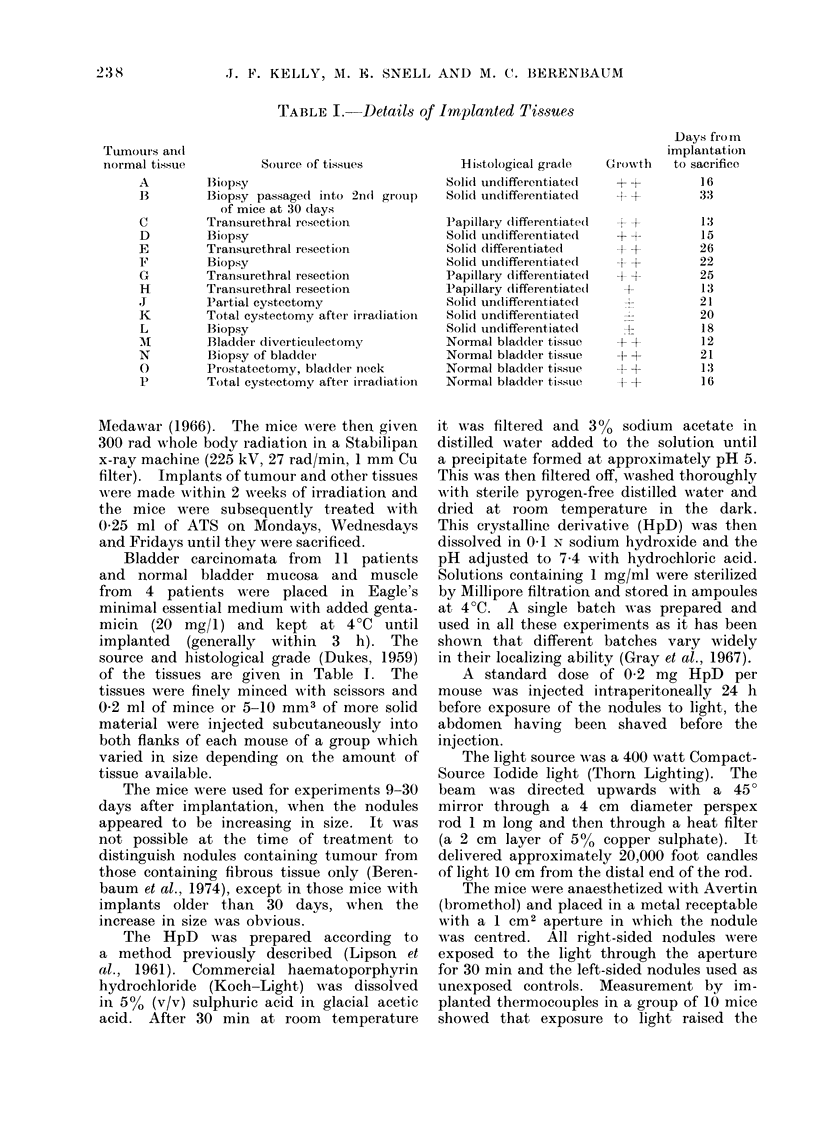
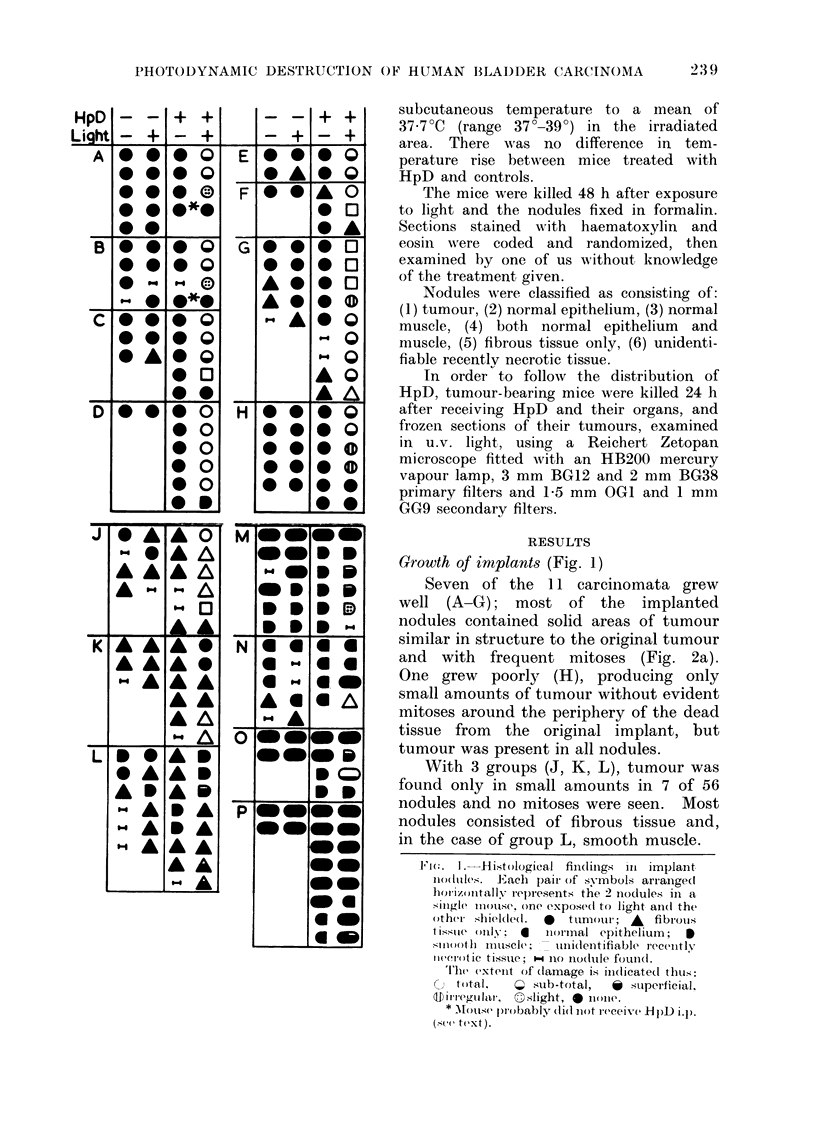

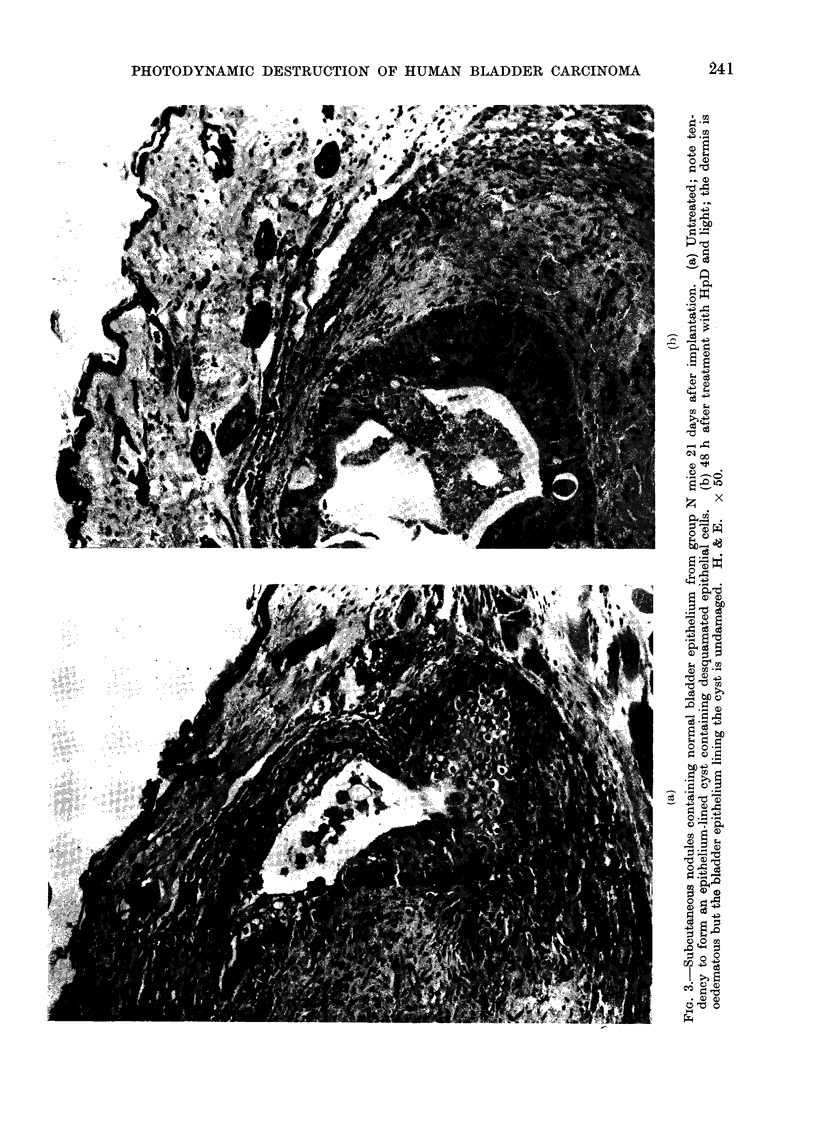
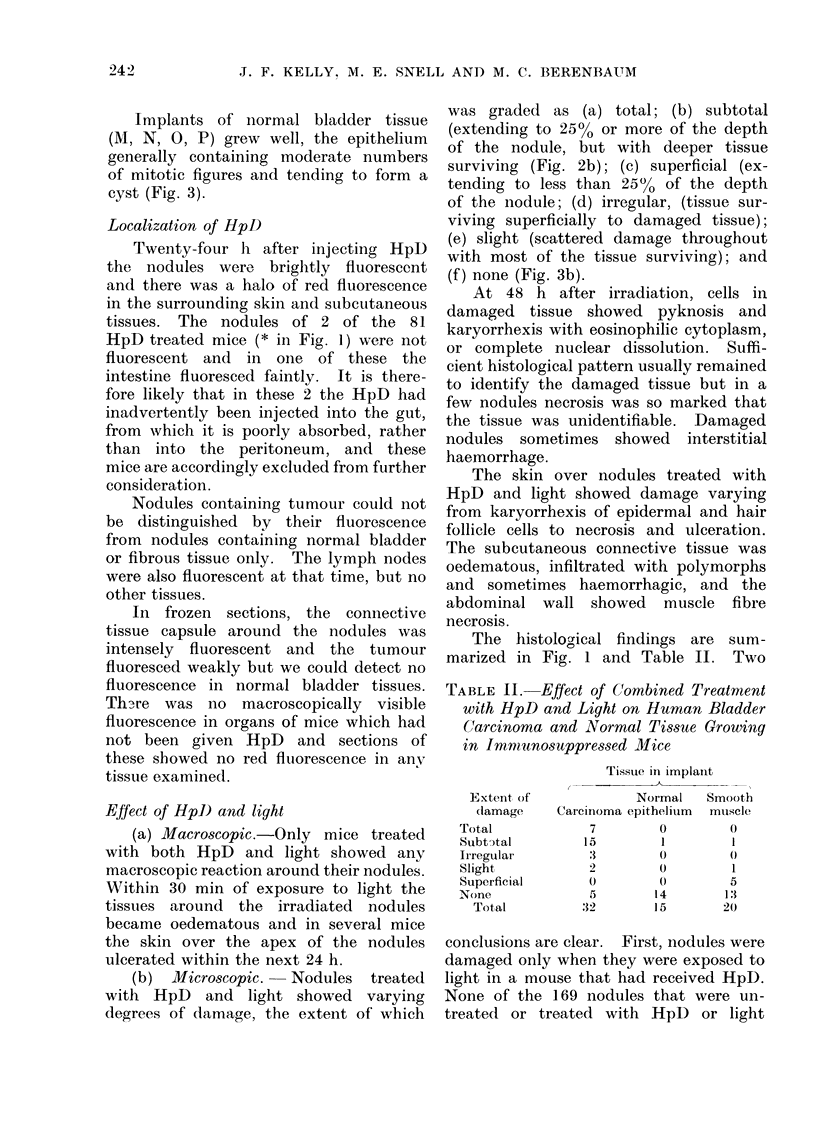
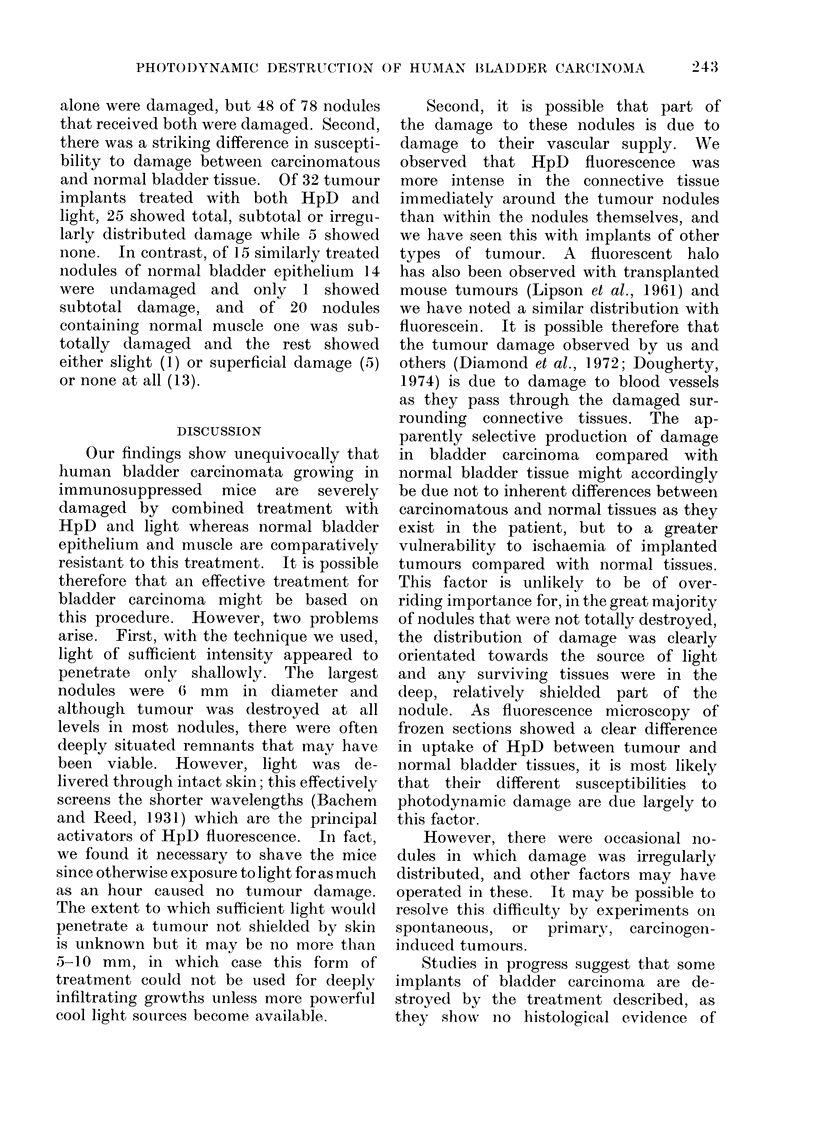
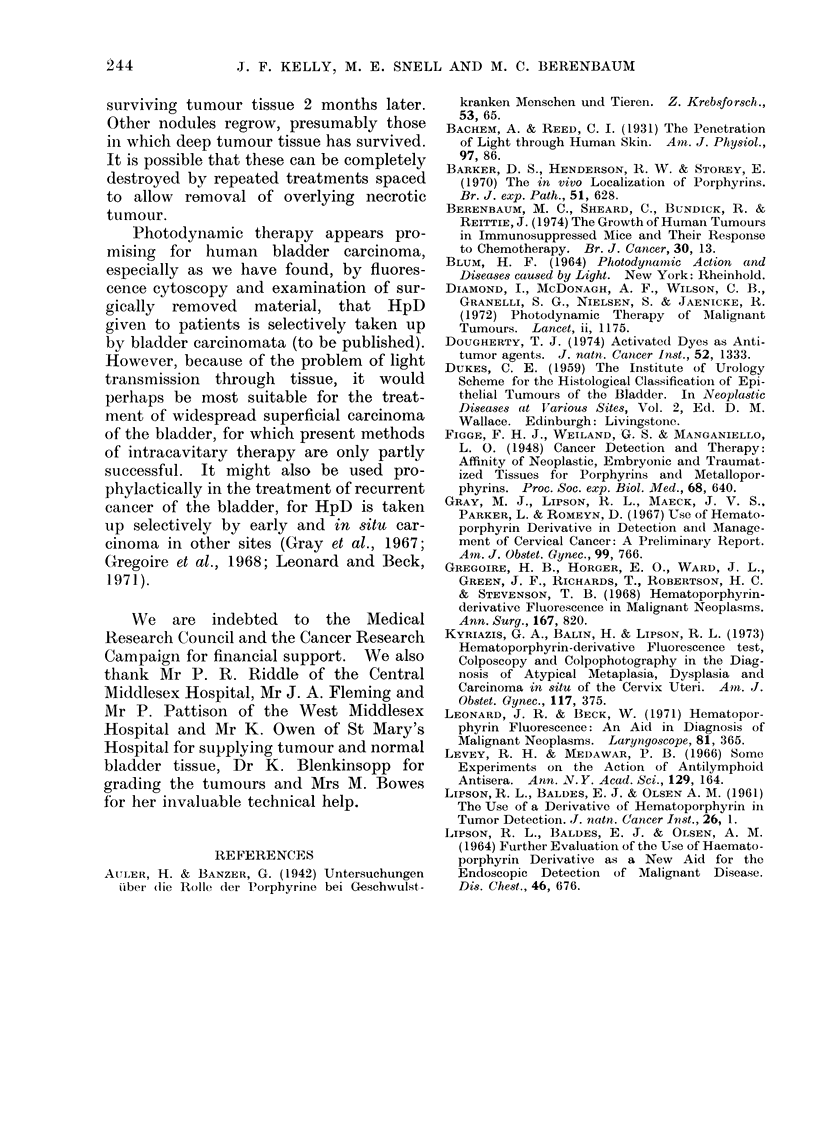
Images in this article
Selected References
These references are in PubMed. This may not be the complete list of references from this article.
- Barker D. S., Henderson R. W., Storey E. The in vivo localization of porphyrins. Br J Exp Pathol. 1970 Dec;51(6):628–638. [PMC free article] [PubMed] [Google Scholar]
- Berenbaum M. C., Sheard C. E., Reittie J. R., Bundick R. V. The growth of human tumours in immunosuppressed mice and their response to chemotherapy. Br J Cancer. 1974 Jul;30(1):13–32. doi: 10.1038/bjc.1974.109. [DOI] [PMC free article] [PubMed] [Google Scholar]
- Diamond I., Granelli S. G., McDonagh A. F., Nielsen S., Wilson C. B., Jaenicke R. Photodynamic therapy of malignant tumours. Lancet. 1972 Dec 2;2(7788):1175–1177. doi: 10.1016/s0140-6736(72)92596-2. [DOI] [PubMed] [Google Scholar]
- Dougherty T. J. Activated dyes as antitumor agents. J Natl Cancer Inst. 1974 Apr;52(4):1333–1336. doi: 10.1093/jnci/52.4.1333. [DOI] [PubMed] [Google Scholar]
- Gray M. J., Lipson R., Maeck J. V., Parker L., Romeyn D. Use of hematoporphyrin derivative in detection and management of cervical cancer. Am J Obstet Gynecol. 1967 Nov 15;99(6):766–771. doi: 10.1016/0002-9378(67)90392-4. [DOI] [PubMed] [Google Scholar]
- Gregorie H. B., Jr, Horger E. O., Ward J. L., Green J. F., Richards T., Robertson H. C., Jr, Stevenson T. B. Hematoporphyrin-derivative fluorescence in malignant neoplasms. Ann Surg. 1968 Jun;167(6):820–828. doi: 10.1097/00000658-196806000-00002. [DOI] [PMC free article] [PubMed] [Google Scholar]
- Kyriazis G. A., Balin H., Lipson R. L. Hematoporphyrin-derivative-fluorescence test colposcopy and colpophotography in the diagnosis of atypical metaplasia, dysplasia, and carcinoma in situ of the cervix uteri. Am J Obstet Gynecol. 1973 Oct 1;117(3):375–380. doi: 10.1016/0002-9378(73)90041-0. [DOI] [PubMed] [Google Scholar]
- LIPSON R. L., BALDES E. J., OLSEN A. M. FURTHER EVALUATION OF THE USE OF HEMATOPORPHYRIN DERIVATIVE AS A NEW AID FOR THE ENDOSCOPIC DETECTION OF MALIGNANT DISEASE. Dis Chest. 1964 Dec;46:676–679. [PubMed] [Google Scholar]
- Leonard J. R., Beck W. L. Hematoporphyrin fluorescence: an aid in diagnosis of malignant neoplasms. Laryngoscope. 1971 Mar;81(3):365–372. doi: 10.1288/00005537-197103000-00003. [DOI] [PubMed] [Google Scholar]



